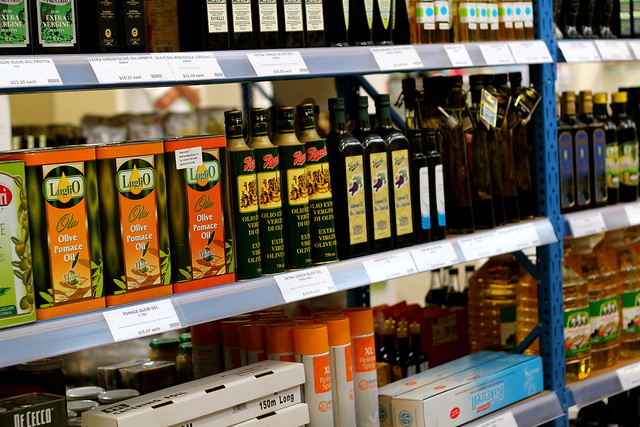In my Sustainability Economics class, we also talked about sustainable food choices (one of my favorite topics!) and the nuts and bolts of doing a Life Cycle Analysis of a particular product or diet “from cradle to grave”.
Life Cycle Analyses try to assess the environmental impacts of certain behavior, for example the consumption of a certain product, throughout the entire “lifespan” of the object in question: from the extraction of resources used for its inputs, over the processing and manufacturing stages, to transport, product use (or preparation if we are speaking of food products) and finally the impact of its disposal.
This makes them useful tools to argue for behavioral change, though they are somewhat difficult to compare because there are so many discretionary decisions in setting up these studies (e.g. where are the system boundaries? What production method will we examine? Do we assess impact per gram, per calorie, or per gram protein, for example?). I already talked about some of the pitfalls and potential misunderstandings when comparing per gram impacts here, if you are new to the blog.
In our class, we examined a different paper titled “Environmental impacts of changes to healthier diets in Europe” by Tukker et al. from Leiden University in the Netherlands.

Image by Flickr-user Sarah-Rose, via Flickr CC.
Their research question was simple: Given that food choices (especially meat and dairy consumption) typically drive 20 – 30% of household environmental impacts, what impact would dietary habit changes have?
Instead of trying to persuade people to eat differently purely for the sake of the environment, the researchers decided to link health and sustainability and look into health-related recommended dietary changes that would reduce the prevalence of Type II diabetes mellitus, obesity, cardiovascular diseases and cancer. Compared to the European 2003 status quo, they set up three scenarios:
(1) Europe-wide changes in the current food consumption patterns towards those specified by the population nutrition goals and guidelines (minimum levels of fruit, vegetable and fish intake, and limits on saturated fat and transfat intakes);
(2) Additionally a reduction of the intake of red meat and no consumption of processed meat;
(3) The plant-based “Mediterranean” diet with frequent consumption of whole grains, fruit and vegetables, fish, olive oil, and alcohol combined with low to moderate intakes of dairy products, beef, pork, and lamb.
They used so-called ‘environmentally extended input output analysis’ to quantify the aggregated environmental impacts of each diet (considering climate change, ozone depletion, terrestrial acidification, freshwater eutrophication, human toxicity, photochemical oxidant formation, Ecotoxicity, and abiotic resource depletion).
What did they find?
(1) This scenario saw no significant changes in environmental impact, since the moderate decreases in meat intake was apparently balanced out by the shift to fish, cereals and vegetables.
(2) and (3) In these scenarios, the environmental impact of diets changed from 27% to 25% of the overall household impact, which translates into an decrease of the environmental impacts of food consumption of 8%. This was mainly thanks to the replacement of red meat for about 40% by chicken, seafood and cereals, since the researchers did not change milk and dairy consumption.
So is that a considerable effect? That remains to be argued, but it is notable that the effect may have been larger, had the researchers stopped at the traditional life cycle analysis endpoint of aggregating all impacts. Instead, however, they went a step farther and incorporated both first- and second-order rebound effects.
First-order rebound effects refer to the fact that any possible savings in reducing the consumption of a particular good will very likely be spent on another good; say, you feel so good about having saved x amounts of dollars and CO2 emissions by restricting your beef consumption that you decide to take a holiday and fly there – effectively cancelling out all positive effects of the behavioral change.
Second-order rebound effects, in turn, are related to regional analyses that are embedded in a world economy. In this case, the question was whether a European demand reduction for a certain product would actually have an impact on production, or whether producers would simply export a larger share of their overall quantity. The researchers thus plugged their life cycle model into a greater model simulating world demand and supply, and found that, for example, the vast majority of red meat that Europeans wouldn’t buy would simply be bought by overseas consumers.
So, to answer the question – no, the Mediterranean diet probably won’t be able to single-handedly solve our environmental concerns – but it could be one step among many to a healthier global ecosystem.
What do you think about the results of the study? Are you surprised by the relatively small impact or do you think it’s a good first step? Have you experienced first-order rebound effects in your own behavior?
0 thoughts on “Can the Mediterranean Diet Save the Planet?”